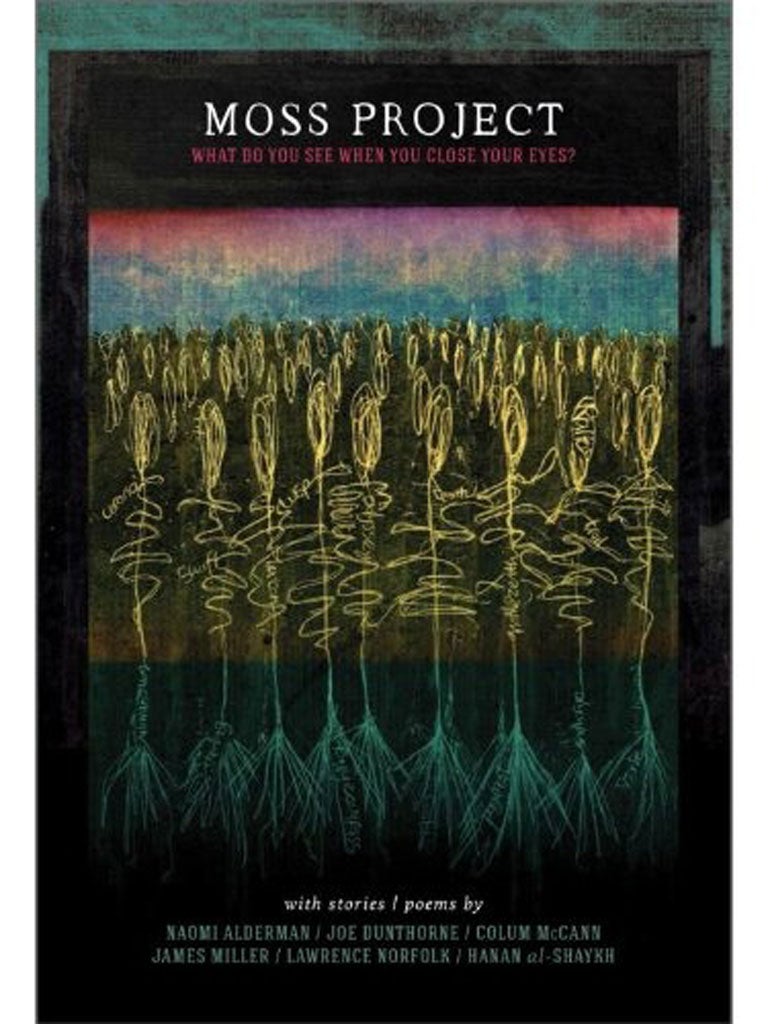Review: What Do You See When You Close Your Eyes?, By Moss Project
Audio CD and book of short stories

Your support helps us to tell the story
From reproductive rights to climate change to Big Tech, The Independent is on the ground when the story is developing. Whether it's investigating the financials of Elon Musk's pro-Trump PAC or producing our latest documentary, 'The A Word', which shines a light on the American women fighting for reproductive rights, we know how important it is to parse out the facts from the messaging.
At such a critical moment in US history, we need reporters on the ground. Your donation allows us to keep sending journalists to speak to both sides of the story.
The Independent is trusted by Americans across the entire political spectrum. And unlike many other quality news outlets, we choose not to lock Americans out of our reporting and analysis with paywalls. We believe quality journalism should be available to everyone, paid for by those who can afford it.
Your support makes all the difference.When the composer and performer Moss Freed finished recording his new jazz album What Do You See When You Close Your Eyes?, he wondered what kind of response it might elicit from the listener, and approached some writers to see if they might put it into words. As a result the album includes a collection of short stories by Colum McCann, Joe Dunthorne, Lawrence Norfolk, Hanan al-Shaykh, James Miller and Naomi Alderman.
Freed believes that his music has a “narrative quality”, and the responses of the authors are fascinating. The Beirut-born author Hanan al-Shaykh wrote about a dinner party, a heroin addict and an “angel”. Joe Dunthorne contributed a poem titled “Freud and Jung ride the Tunnel of Love”. Lawrence Norfolk’s “Caravan”, potters along the A and B roads of the west of England, asking pub quiz questions.
Alderman, who also writes video games, had never written so directly in response to a piece of music before, she tells the Independent on Sunday: “Although I do listen to a lot of ‘running’ music when I’m writing my running game, to get me in the right headspace. And definitely certain scenes in my novels have a connection to certain pieces of music. There’s a bit in The Lessons which will always be tied to Sibelius for me.”
Her method was to listen to the track, “The Bubble”, on repeat over and over in a library until something emerged. “It’s quite a strange, beautiful and mysterious process - just listening and waiting for the fingers to start moving on the keyboard. Like Victorian spiritualists and automatic writing. I don’t 100 per cent know what my piece means but that seems to fit with the mood of the music too - a bit of mystery in it, a combination of optimism and tragedy.”
‘Listen to the music in your head, stay light, float away’
The Bubble, By Naomi Alderman
There’s a bubble inside her. Like a balloon, about that big. A child’s multicoloured balloon. But not a balloon, a bubble. Right in the centre of her body, somewhere between womb and stomach. It’s an ordinary bubble made of soap or somesuch. Thinner-than-thin swirling rainbow filament skin. It’s the thing that keeps her so light.
When she’s walking along the street, she can feel the bubble. It’s the thing that makes her feet not quite touch the ground, the engine that keeps the colours moving inside her head. There they go. Every jangle of keys, every shout of passer-by, every roar of a car, every ugly thing turns into those moving rainbows, and so it’s perfectly alright. A motorbike shrieks to a halt to avoid a pedestrian, and the sound of it is red velvet streamers fluttering in the breeze.
Shopping falls to the floor, and the crunch of broken glass is blue ice crystals sparkling. The angry man swears, but bright yellow gerberas stream from his lips, rising up into the air. So she’s fine, she’s just fine.
The thought crosses her mind that at some point this bubble inside her abdomen, somewhere between womb and stomach, is likely to burst. That’s what bubbles do, after all. They can’t last forever, and then where will she be? There’s a kind of danger there, roaring and violent. Something right there in the centre of her body. Something that happened. The bubble says: don’t think about it. Listen to the music playing in your head, stay light, float away, don’t come back down.
Some other part of her, very far away, says: you’ll have to come back in the end. This music can’t last forever. Don’t you remember the wires, that knotted self, the various kinds of damage you have already caused to yourself? Don’t you remember what’s happened?
No, says the bubble. No no no. Everything is fine. Nothing has gone wrong in either my womb or my stomach. I haven’t lost anything, and I certainly didn’t make it happen myself. I’m light. So very light. Look at the sky, so full of clouds, each one pearlescent-pink or glass-green or bottle-blue or vivid-violet. Look at the sky. Float up to it on that bubble. Don’t look down.
Naomi Alderman’s latest novel The Liar’s Gospel is published in paperback by Viking, £8.99
Join our commenting forum
Join thought-provoking conversations, follow other Independent readers and see their replies
Comments